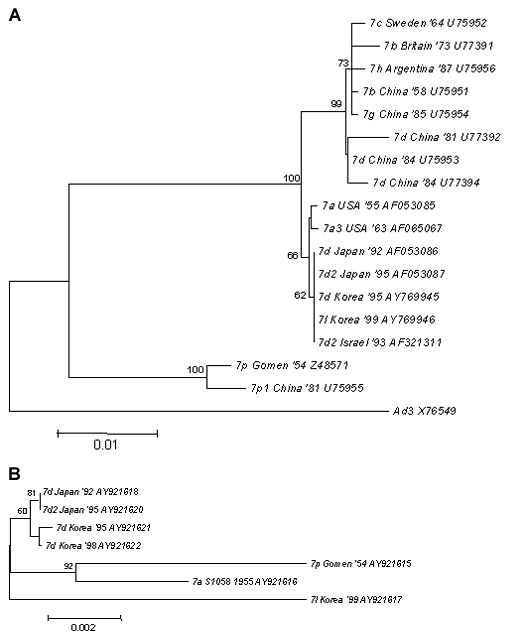Volume 11, Number 5—May 2005
Research
Adenovirus Type 7 Peptide Diversity during Outbreak, Korea, 1995–2000
Figure 2

Figure 2. . Phylogenetic analyses of both hexon and fiber with E4 open reading frame (ORF) 6/7 peptides in adenovirus type 7 (Ad7). Phylogenetic trees were constructed by using the neighbor-joining algorithm. Branch lengths are proportional to the number of nucleotide substitutes, and bootstrap probabilities ≥60 are shown at each adjacent node. A) Phylogenetic tree based on 1,428 bp making up nucleotides 297–1725 of the hexon gene of 17 strains of Ad7 with diverse genome types. The sequence of Ad3 (X76549) was defined as an outgroup. B) Phylogenetic tree based on 2,150 bp, including the complete sequence of fiber and E4 ORF 6/7 peptides.
Page created: April 24, 2012
Page updated: April 24, 2012
Page reviewed: April 24, 2012
The conclusions, findings, and opinions expressed by authors contributing to this journal do not necessarily reflect the official position of the U.S. Department of Health and Human Services, the Public Health Service, the Centers for Disease Control and Prevention, or the authors' affiliated institutions. Use of trade names is for identification only and does not imply endorsement by any of the groups named above.